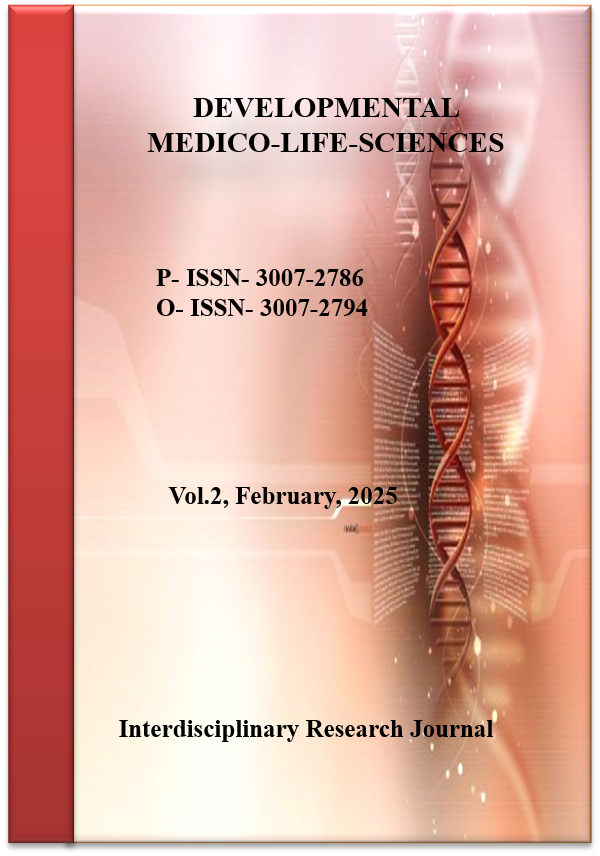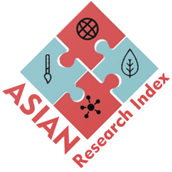Unraveling the Psychophysiological Nexus – The Impact of Stress and Mental Health on Chronic Pain and Gastrointestinal Disorders
Stress–Mind–Gut Nexus
DOI:
https://doi.org/10.69750/dmls.02.02.0100Keywords:
Stress, Pain, Psychophysiology, Neurobiology, Microbiome, neuroinflammation, Gut-brainAbstract
One of the most interesting medical problems of our time is the intricate interplay between psychological stress, mental health, and the appearance of chronic pain and certain gastrointestinal disorders. At the crossroads between neurosciences, gastroenterology, and psychiatry, a paradigm shift emerges indicating that the psychophysiological nexus is not a background hum in patient histories but a major determinant of the evolution and maintenance of debilitating conditions. This editorial examines recent progress in the understanding of these interconnections and advocates for a paradigm shift in both research and clinical practice [1].
Neurobiological Underpinnings: From Stress to Sensitization:
In the past decades, research has shed light on how stress influences neural circuits involved in pain perception. Chronic activation of the hypothalamic-pituitary-adrenal (HPA) axis, a hallmark of prolonged stress exposure, leads to sustained elevations in glucocorticoids. In addition to disrupting homeostatic neuroendocrine function, these hormones also produce structural and functional changes in the central nervous system. Prolonged stress exposure has been shown through neuroimaging studies to change connectivity of the limbic system and, in particular, the amygdala to prefrontal cortex, resulting in increased pain sensitivity as well as a lowered threshold on nociception [2].
Chronic stress, at a cellular level, triggers neuroinflammatory cascades, in which cytokines and chemokines are released and may sensitize pain pathways. For instance, the transition from acute to chronic pain states has been linked to microglial activation, which may imply that the inflammatory milieu within the central nervous system is a key mediator in this complicated back and forth between mind and body [3].
Gastrointestinal Disorders: A Bidirectional Dialogue:
In the past, gastrointestinal disorders, including irritable bowel syndrome (IBS) and functional dyspepsia, were considered to have local pathology. But new research has redefined these conditions as systemic disorders that are affected by the bidirectional communication of the gut-brain axis. Several ways in which psychological stress can change gut physiology include alterations in motility, secretion, and permeability. Often associated with these alterations is a change in the composition of the gut microbiome, and in its turn, this can cause changes in local inflammation as well as in central nervous system function [4].
Microbial metabolites have recently been implicated in modulating neural activity, and dysbiosis has been associated with the sensory and affective dimensions of pain. The need for integrated diagnostic frameworks is underscored by the intricate feedback loop whereby stress can induce gastrointestinal alterations, which then occur in turn as mental health symptoms, and in the case of MI, in which mental health symptoms also function as the precipitant to gastrointestinal alterations. These frameworks should not only evaluate gastrointestinal function but also psychological well-being so that a more complete understanding of the patients' symptomatology can be achieved [5].
Integrating Multidisciplinary Approaches:
This psychophysiological nexus is so complex that a multidisciplinary approach is needed that bridges the siloed specialties. Increasingly, there is evidence supporting the integration of behavioral therapies (such as cognitive behavioral therapy, mindfulness-based stress reduction, and acceptance and commitment therapy) with pharmacological treatments focused on both pain and gastrointestinal symptoms. These non-pharmacological strategies have been proven to attenuate the effects of stress, decrease inflammatory markers, and better patient patient-reported outcomes [6].
Additionally, personalized medicine represents a promising approach by which interventions can be tailored to the individual patient’s unique neurobiological and psychosocial profile. Clinicians can better predict treatment responses and optimize a therapeutic regimen by incorporating biomarkers, including inflammatory cytokine profiles, neuroimaging markers of connectivity changes. This approach is not only personalized, but also holds the potential for more effective symptom management and to counteract the chronic stress’s long-term health effects [7].
The Role of Lifestyle and Environmental Factors:
The psychophysiological landscape is made up of the neurobiological and clinical, but lifestyle and environmental factors are an indispensable part of that. Socioeconomically stressful environments, adverse childhood experiences, as well as environmental exposures, are proposed to alter stress responsivity and susceptibility to both mental health disorders and chronic pain syndromes. Interventions aimed at these broader determinants of health, such as community-based programs, workplace wellness initiatives, and social inequality-reducing policies, are necessary to address this complex interplay [8].
Additionally, there is growing interest in the nutritional interventions, including the use of prebiotics and probiotics, for the restoration of gut microbiome balance and attenuation of the systemic inflammation. Such strategies together play an important role in encouraging a holistic approach to health as involving medical, psychological, and lifestyle dimensions [9].
Challenges in Research and Clinical Translation:
Although a great deal has been accomplished in understanding the psychophysiological nexus, there remain gaps. Because patient presentations are heterogeneous and chronic pain and gastrointestinal disorders are multifactorial, highly nuanced research methodologies are required to characterize these conditions. The translation of what has been learned in animal models of stress into human populations has been a major challenge. Elucidation of causal relationship and biomarker that predict disease onset and treatment response is necessary and can only be achieved through longitudinal studies [10].
Second, there is an urgent need for standardized diagnostic criteria based on a combination of psychological assessments and physiological measurements. Such criteria would not only help in the diagnosis, but also provide an opportunity to develop treatment strategies that are based on the individual needs of each patient. These are hurdles that cannot be overcome and progress towards understanding the complex interplay of this system will not be made without the collaborative efforts of disciplines as diverse as neurobiology to gastroenterology to behavioral science [11].
Future Directions and the Promise of Innovation:
The research in this domain has both a promising and a challenging future. Neuroimaging and molecular diagnostics innovations will change the way we understand psychophysiology. But functional MRI and the most sophisticated genomic profiling are already starting to reveal the neural correlates of stress and pain. There is no doubt that these tools will be instrumental in the search for new therapeutic targets as well as in refining our treatment of patients [12].
Furthermore, digital health technologies aimed at tracking stress biomarkers using wearable devices or mobile apps offering mindfulness training may offer promising new approaches to real time patient monitoring and personalized intervention. These innovations could help manage the chronic pain and gastrointestinal disorders by providing the clinician with more dynamic and responsive treatment strategies by providing a continuous stream of data [13].
Conclusion
Stress psychophysiology, mental health, chronic pain, and gastrointestinal disorders are not just a trivial academic pursuit but a clinical imperative. As we learn more about these intertwined pathways, we will be able to develop interventions that are both scientifically grounded and profoundly humanistic. To relieve the burden of these conditions and to maximize patients’ outcomes, we will need to adopt a holistic approach to healthcare that will bring together neurosciences, gastroenterology, and psychiatry. The pathway towards decoding enigmatic dialogue between stress and somatic health remains long, and the journey has been marked with challenges and discoveries. Investment in multidisciplinary research coupled with a commitment to personalized, patient-centered care places us on the cusp of revolutionizing modern medicine in ways that may be utterly revolutionary. In this new paradigm, mind and body are neither barrier nor beacon, but at the beaconing of a new future of suffering reduction and quality of life maximization.
Downloads
References
Arnold CA, Bagg MK, Harvey AR. The psychophysiology of music-based interventions and the experience of pain. Front Psychol. 2024;15:1361857. doi:10.3389/fpsyg.2024.1361857
Purdy J. Chronic physical illness: a psychophysiological approach for chronic physical illness. Yale J Biol Med. 2013;86(1):15-28.
Flor H, Turk DC, Birbaumer N. Assessment of stress-related psychophysiological reactions in chronic back pain patients. J Consult Clin Psychol. 1985;53(3):354-64. doi:10.1037/0022-006X.53.3.354
Cacha L, Poznanski R, Latif A, Tengku M. Psychophysiology of chronic stress: an example of mind-body interaction. NeuroQuantology. 2019;17(7):53-63. doi:10.14704/nq.2019.17.07.2562
Farmer AD, Aziz Q, Tack J, Van Oudenhove L. The future of neuroscientific research in functional gastrointestinal disorders: integration towards multidimensional (visceral) pain endophenotypes? J Psychosom Res. 2010;68(5):475-81. doi:10.1016/j.jpsychores.2009.12.006
Mansoor I. Unraveling the nexus: investigating the relationship between neuroception of psychological safety and childhood traumas. Pak Soc Sci Rev. 2025;9(1):381-90. doi:10.35484/pssr.2025(9-I)30
Michels N. Biological underpinnings from psychosocial stress towards appetite and obesity during youth: research implications towards metagenomics, epigenomics and metabolomics. Nutr Res Rev. 2019;32(2):282-93. doi:10.1017/S0954422419000143
Gusev E, Sarapultsev A. Interplay of G-proteins and serotonin in the neuroimmunoinflammatory model of chronic stress and depression: a narrative review. Curr Pharm Des. 2024;30(3):180-214. doi:10.2174/138161282865578231218102020
Ashique S, Mohanto S, Ahmed MG, Mishra N, Garg A, Chellappan DK, et al. Gut-brain axis: a cutting-edge approach to target neurological disorders and potential synbiotic application. Heliyon. 2024;10(13):e34092. doi:10.1016/j.heliyon.2024.e34092
Levy RL, Olden KW, Naliboff BD, Bradley LA, Francisconi C, Drossman DA, et al. Psychosocial aspects of the functional gastrointestinal disorders. Gastroenterology. 2006;130(5):1447-58. doi:10.1053/j.gastro.2005.11.057
Mussell M, Kroenke K, Spitzer RL, Williams JBW, Herzog W, Löwe B. Gastrointestinal symptoms in primary care: prevalence and association with depression and anxiety. J Psychosom Res. 2008;64(6):605-12. doi:10.1016/j.jpsychores.2008.02.019
Tak LM, Riese H, de Bock GH, Manoharan A, Kok IC, Rosmalen JGM. A meta-analysis and systematic review of methodological quality of heart rate variability studies in functional somatic disorders. Biol Psychol. 2009;82(2):101-10. doi:10.1016/j.biopsycho.2009.05.002
Wirtz PH, von Känel R. Psychological stress, inflammation, and coronary heart disease. Curr Cardiol Rep. 2017;19(11):111. doi:10.1007/s11886-017-0919-x






















